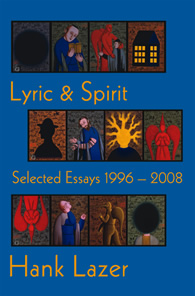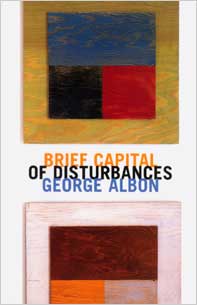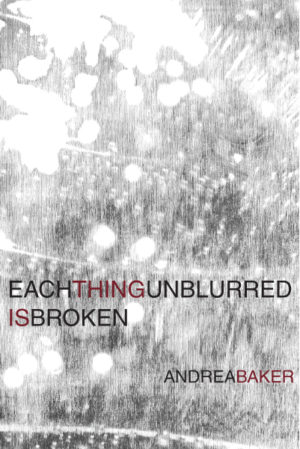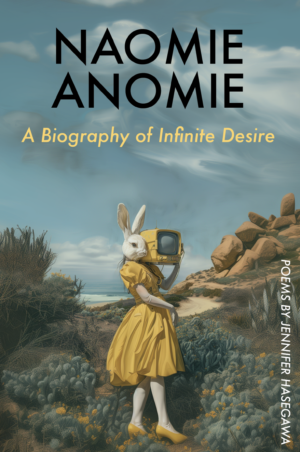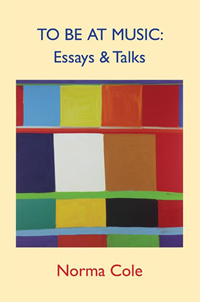Description
This selected—the first compilation of essays by Hank Lazer following his ground-breaking and much revered two-volume Opposing Poetries—offers twelve years of incisive writing at the intersection of two of the more contentiously debated topics in current letters. Drawing on poetic traditions as seemingly disparate as Language writing and Buddhist poetry, Lazer pursues a way of reading that is rich in the music and spirit of the word, attuning readers to the pleasures and range of possibilities for innovative poetry. In a very accessible writing style, and with flashes of brilliance, Lazer explores and identifies new approaches to the lyric and to the writing of spiritual experience in American poetry of the past one hundred years. In this book of essays, interviews, reflections, and more, Lazer focuses on two topics central to the poetry of our time: the changing nature of beauty in the lyric and the necessity of finding new ways of embodying spirituality. By bringing a wide range of perspectives to his readings—from the jazz of Monk and Coltrane to the philosophy of Heidegger and Derrida—Lazer’s essays inspire readers to enter into a renewed and renewing relationship with poetry.
In these lucid, engaging, and informative essays, Hank Lazer enlists lyric and spirit in a project of radical resistance to the received in pursuit of intensification of the possible. If Lazer calls for beauty, it is an unexpected beauty, earned not given. This is a compelling study of contemporary American poetic practice, with special attention to Armantrout, Creeley, Fischer, Taggart, Mackey, Zukofsky, Jabés, Duncan, and Schwerner, among others, in the context of a critical approach informed by two unlikely soul mates, Theodor Adorno and Thelonious Monk.
Charles Bernstein
In Lyric & Spirit Hank Lazer gives us twelve years of the best of his ongoing reading and thinking about contemporary innovative poetries. In discussing with generous appreciation an eclectic and often surprising range of poets (from Zukofsky to Berry, Jabés to Armantrout) he makes the crucial point that the ancient roots of poetry in musics that conveys language’s ultimate, endless, groping for meaning’s elusiveness are as gripping as ever, though in radically new ways, in post-modern poetry. These essays seem to me essential reading for anyone interested in an honest, searching, and thoughtful exploration of where and what poetry is now.
Norman Fischer
About the Author
Reviews
Excerpt
Hank Lazer has published 12 books of poetry, most recently The New Spirit (Singing Horse, 2005), Elegies & Vacations (Salt, 2004), and Days (Lavender Ink, 2002). He has given poetry readings and talks in the United States, Canada, China, Spain, France, and the Canary Islands. Lazer’s poetry has been nominated for the 2005 Pulitzer Prize and the 2004 Forward Prize. With Charles Bernstein, he edits the Modern and Contemporary Poetics Series for the University of Alabama Press. His two-volume collection of essays, Opposing Poetries, was published by Northwestern University Press (1996). For the past twelve years, his essays on innovative poetry, new modes of lyricism, and representations of spiritual experience have appeared in a variety of journals, including Facture, The Boston Review, Jacket, American Poetry Review, and Talisman. Hank Lazer is a Professor of English at the University of Alabama where he is also an administrator serving as Associate Provost for Academic Affairs.
Lazer’s essays are the “pause,” and “shift,” the “something on paper” that effect a reconsideration of the post-modern. The rendition he plays is informed not only by his readings in philosophy and critical theory but by poetic sensibilities that make his essays as “beautiful” as his poems.
from The Lyric Valuables: Soundings, Questions, & Examples
I would like to give some considered thought to what George Oppen called the “lyric valuables.” Specifically, I am interested in several related issues: lyric (or lyrical) in relation to what? that is, what are the changing contexts of the lyrical in contemporary poetry? what modes of music or musicality are crucial to the lyrical (as opposed to a lyrical intensity that results from a concentrated image making—i.e., my interest is thus in, to borrow Pound’s categories, melopoeia rather than logopoeia or phanopoeia)? how does contemporary poetry participate in changing the nature of what we hear as “beautiful” in poetry?
Also, I am interested in considering Stein’s comments in “Composition as Explanation” where she describes the rather sudden shift from outlaw to classic, the almost instantaneous shift in our perception of the ugly and the beautiful. This latter area of inquiry seems to me to be principally pedagogical and phenomenological in nature. In teaching, we are often faced with a situation where we hope to alter or expand the aesthetics of our students. We ask them to learn ways to read and enjoy poetries that, initially, strike them as “ugly,” “crazy,” “arbitrary,” “random,” and so on. In effect, we are asking them (and ourselves, through our own continued explorations as readers) to read and to hear differently. Increasingly, I have been struck by the fraudulent nature of such schooling. I have begun to tell my students not to confuse the classroom experience with their broader education in poetry. When considering the “lyric valuables,” what is the problem with school? The time frame. To experience a conversion on demand, within a fifteen week period, or, more likely within a week or two, is unreasonable. To read and to hear differently may take what amounts to a paradigm shift, a fundamental reconsideration on the part of the reader of what constitutes the meaningful and the beautiful.
Stein, in 1926 in “Composition as Explanation,” laments the absence of listeners and readers and contemporaries: “it is so very much more exciting and satisfactory for everybody if one can have contemporaries, if all one’s contemporaries could be one’s contemporaries” (496). In part, she may be seen to cast blame on the reader: “If every one were not so indolent they would realize that beauty is beauty even when it is irritating and stimulating not only when it is accepted and classic” (497). But Stein laments equally the rapidity of that shift in perception: “the creator of the new composition in the arts is an outlaw until he is a classic there is hardly a moment in between and it is really too bad very much too bad” and “There is not an interval. For a very long time everybody refuses and then almost without a pause almost everybody accepts. In the history of the refused in the arts and literature the rapidity of the change is always startling” (496). Perhaps a change in taste does occur as an aboutface; but Stein’s version in “Composition as Explanation” of that turnabout omits the events of the time in between, the time as preparation, perhaps unseen and unknown, for a shift in aesthetics. But perhaps Stein’s earlier perspective in The Making of Americans is more to the point, or the lack of a point. Perhaps a gradualness is more truthful to our own extended reading experience, our own extended change in taste. For each of us, there will be certain poets whose work initially sounds jarring, unpleasant, irrelevant, and ugly. Such an experience, for adventurous listeners, may be fairly commonplace in music—the later compositions of John Coltrane, for example, or pieces by Terry Riley or Carla Bley or Lou Harrison—work that initially sounds like noise that later comes to have a distinct beauty to it. In poetry, that experience might come from reading work by John Ashbery or Gertrude Stein or Charles Bernstein or John Cage. Did the change in perception occur all at once? The change in perception may have been remarked upon all at once, but the change itself occurred over time in a perhaps imperceptible gradualness that makes an account of it impossible.
Is a pure lyricism any longer credible? Such a question can be asked partly from the perspective of Adorno’s assertion that poetry (or lyrical poetry?) after Auschwitz is impossible, that the beauty put forward in such poetry no longer bears an ethical or credible relationship to a century of mass atrocities. To question whether a lyricism is any longer possible may also stem from an intense desire to create a “new realism.” Thus perhaps in our time the more credible instances of the “lyric valuables” occur in a broader context, less segregated, less precious, less isolated, more in a dialectical relationship (as in Lyn Hejinian’s My Life) to surrounding modes of language and expression. At another extreme, one suggested by John Cage’s work, one might ask is it possible to produce a writing that is thoroughly anti-lyrical (an absolute minimalism?) that nonetheless remains interesting, that nonetheless compels attention and rewards relistening?
And, even before I begin to propose examples allegedly worthy of consideration, does my selection and advocacy of a passage of poetry as “beautiful” amount to anything more than a personal liking? Is the outcome merely my effort to convince you to assent to this declaration of beauty?

